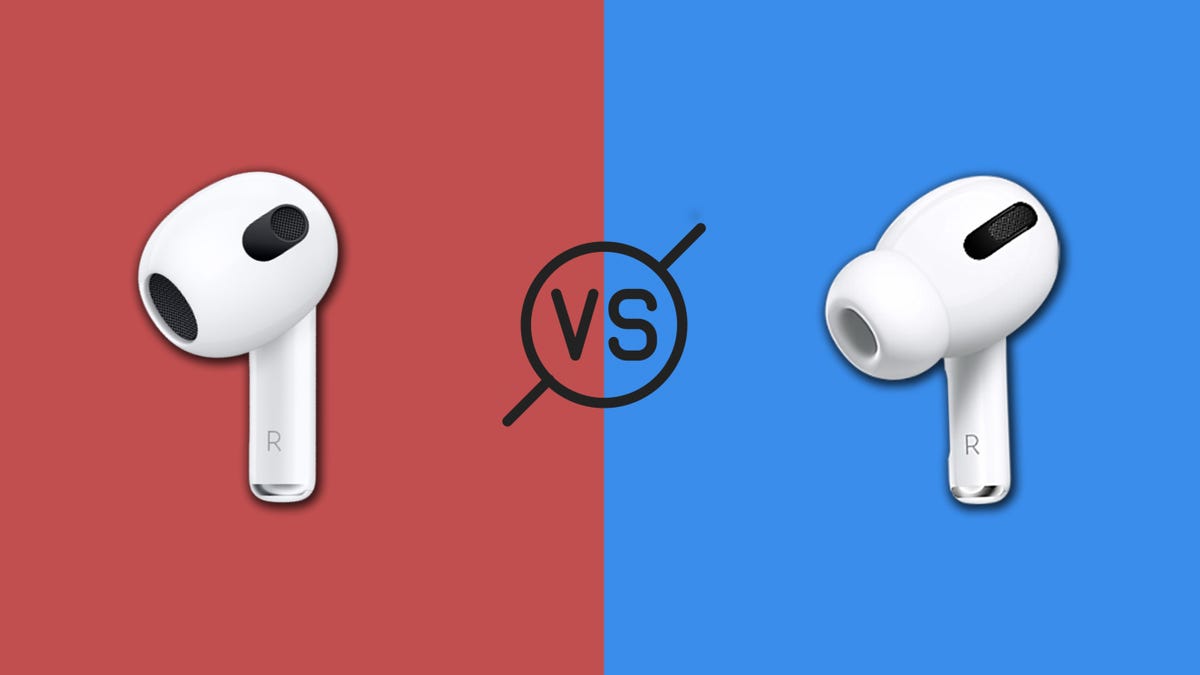Apple AirPods 3 vs. AirPods Pro (1st Gen): Which earbuds are better?

It's been more than half a decade since Apple released the original AirPods, and while the glossy white buds have taken new shapes and sizes since then, they remain a top pick for the best wireless earbuds today.
If you're shopping for a new pair of AirPods this holiday season, then chances are high that the third-generation AirPods and Apple's original AirPods Pro are on your or your recipient's wish list.
Both models offer exceptional audio quality, especially if you own an iPhone, and a wealth of sound features to enhance the overall listening experience. From all the wireless earbuds that we've tested throughout the years, Apple clearly has a knack for microphone quality, too.
But between the two AirPods models, there are several differences to note that, while not as easily detectable from Apple's marketing lingo and posters, should make your buying decision more straightforward than you'd think. To help you decide which of the two you should buy, I've listed the key arguments for each model below.
More: 30-plus Black Friday deals on the best headphones right now
Specifications
|
AirPods 3 |
AirPods Pro (1st Gen) |
|
|
Microphones |
Dual beamforming |
Dual beamforming |
|
Listening experience |
Personalized Spatial Audio |
Personalized Spatial Audio, Active Noise Cancellation, and Transparency Mode |
|
Connectivity |
Bluetooth 5.0 |
Bluetooth 5.0 |
|
Durability |
Earbuds: IPX4 |
Earbuds: IPX 4 |
|
Battery |
Up to 6 hours of listening time with one charge |
Up to 4.5 hours of listening time with one charge |
|
Chip |
H1 |
H1 |
|
Price |
Popular now |
You should buy the AirPods 3 if…
1. You prefer the classic AirPods design
The AirPods 3 are the newer of the two models I'm comparing, but they retain that familiar stemmed design of the first-generation AirPods. If you prefer that over the cushioned hooks of the Pro, then the AirPods 3 are the way to go.
While the non-Pro model is less flashy on paper, the AirPods retain two notable audio features from their more expensive sibling: Spatial Audio and Adaptive EQ. The former is Apple's in-house tech that synchronizes audio playback via dynamic head tracking. Basically, the sounds of music, videos, and movies play in your ears as if the sources of the sound are physically in front of you. Adaptive EQ helps to automatically adjust the low and mid frequencies of AirPods 3 so that you get the most full and true-to-life sound.
Review: AirPods 3: Improvements in all the right places
2. You want a more durable case
While both earbud models are rated for IPX4, meaning they can sustain splashes of water, the AirPods 3's charging case also has that same certification, while the AirPods Pro's charging case does not. While you'll often have the charging cases tucked away in a pocket or bag anyway, still, there's objectively more protection with the newer AirPods 3.
Left: AirPods 3, Right: AirPods Pro. Jason Cipriani/ZDNET
3. You prioritize battery life and endurance
Beyond comfort and sound quality, battery life is a pillar that's worth the weigh-in between the two AirPods models. While the charging cases look nearly identical, you can expect greater endurance from the newer AirPods 3.
During our reviews, the AirPods 3 achieved the estimated 30 hours of music playback that Apple advertised. That's a step up from the 24-hour battery life of the AirPods Pro. A key reason for this is the AirPods 3's lack of active noise cancellation (ANC). Without the noise-canceling feature, the non-Pro AirPods are able to retain power more efficiently. Turning off Spatial Audio, which only works with select Apple Music media files, helps just as much.
The AirPods 3 will last you about 6 hours before needing to be docked in the charging case, while the AirPods Pro will last between 3 to 5 hours depending on whether you have ANC on or off. In both cases (literally), you can charge via Lightning cable, wirelessly via Qi, or through Apple's MagSafe system.
Also: 10+ best Black Friday Apple deals happening right now
You should buy the AirPods Pro (1st Gen) if…
1. You want active noise cancellation (ANC)
The biggest selling point of the AirPods Pro is ANC. Not to be confused with “passive noise cancellation,” which comes from the natural sealing of the earbud tips, ANC uses the external microphones of the AirPods Pro to deflect ambient sounds like bird chirps, fans, and chatter. This crown jewel of an audio feature has made its way across most, if not all, high-end earbuds and headphones, and may well spoil you for any other way of listening to music.
Also, the AirPods Pro have a transparency mode that amplifies the sounds of your surroundings so you don't miss a beat of reality. Instead of taking off your earbuds, you can use transparency mode to listen for subway stops, monitor traffic, or converse with a passerby.
Also: Our top picks for noise-cancelling headphones
2. You prefer cushioned earbuds
The original AirPods were long and too jarring of a design for many to wear. That's part of why Apple later launched the short-stemmed AirPods Pro. With tapered silicone tips that come in small, medium, and large sizes, the AirPods Pro are arguably more customizable than the AirPods 3, and the in-ear design provides superior passive noise cancellation.
Comparatively, the AirPods 3 rely on a contoured form factor — not rubber tips — to cling onto your ears. Naturally, there is less of a seal with this model, though many will find the less intrusive application more comfortable, especially when wearing the buds for hours on end.
Also: Apple AirPods Pro (2nd Gen): Better ANC and an improved charging case
Alternatives to consider
Open to other wireless earbuds prospects? Consider these ZDNET-tested devices:

